“Ainulindalë - The Music of the Ainur”
Dresden Codak cartoonist Aaron Diaz puts a fresh spin on Tolkien by illustrating each character of The Silmarillion as though it were an HBO animated series. Personally, I think that if you were to animate one of Tolkien's works today, only Miyazaki would do it justice, but that in no way negates my enormous admiration for Diaz's work on this project. These illustrations are what it might look like if Peter Jackson had used the crew of Samurai Jack to bring Lord of the Rings to life. Visit the project's Tumblr, and bookmark it today!
"This is the beginning of a side project I’ve been working on, where each week I’ll be posting an illustration that corresponds with a different chapter of J.R.R. Tolkien’s Silmarillion.
The Music of the Ainur is essentially the beginning of Tolkien’s creation myth, where the Earth is slowly formed into being by ethereal song. Nothing too fancy just yet, but tune in next week as things heat up!"
"Of all the Valar, Aulë and Yavanna are my favorites, the ultimate husband & wife combo. Aulë is functionally the god of craftsman, and is said to be most like the villainous Melkor in personality (his servants Sauron and Saruman both turn evil, plus he trained troublemaking Fëanor) but Aulë himself remains virtuous and humble. Even when he created the Dwarves in defiance of Eru, it was meant to be a tribute to the Elves & Men (Eru’s personal creations). As such, the Dwarves were given true life and allowed to be awakened after the Elves. Aulë represents the creative ambition of Melkor without the jealousy or vanity.
Yavanna, creator of the Ents, is great because she’s one of the only Valar who actively tries to keep Middle-Earth from becoming overrun with evil, as her interest is with the actual plants and animals of the world. She’s also the one who chose Radagast to be one of the Istari sent to Middle-Earth. It’s also worth noting that while they got along very well, Aulë’s and Yavanna’s creations or servants did not. Dwarves and Ents have never had good relations, and Saruman despised Radagast to the end of his days."
"Silmarillion Chapter 3: Of the Coming of the Elves and the Captivity of Melkor"
"But at the last the gates of Utumno were broken and the halls unroofed, and Melkor took refuge in the uttermost pit. Then Tulkas stood forth as champion of the Valar and wrestled with him, and cast him upon his face; and he was bound with the chain Angainor that Aulë had wrought, and led captive; and the world had peace for a long age"
Thingol and Melian are the High King and Queen of Beleriand, and functionally all of Middle-Earth in their day. Melian is a Maia, the race of spirits that include Sauron. Tolkien gives very little description of her, so I decided to keep a slightly otherworldly appearance, with horns like a faun or forest spirit. She’s actually much wiser than her husband and much more joyful, so I wanted to make sure that imagery held."Then an enchantment fell on him, and he stood still still; and afar off beyond the voices of the lómelindi he heard the voice of Melian, and it filled all his heart with wonder and desire. He forgot utterly all his people and the purposes of his mind, and following the birds under the shadow of the trees he passed deep into Nan Elmoth and was lost. But he came at last to a glade open to the stars, and there Melian stood; and out of the darkness he looked at her, and the light of Aman was in her face."
Thingol is the King of the Sindar, the “Grey Elves” who stayed in Middle-Earth (though Thingol himself made the journey to Aman once). As the tallest of the Men and Elves and one of the mightiest in battle, I wanted to keep his form larger and imposing. Older Elves can grow beards, and I’ve decided that any male Elf who was among the first to awaken (this includes Thingol) will be sporting a beard.
Above is a painting of the Tirion, which became the capital city of the Noldor. It faces the gap of Calacirya, which is the only opening in the mountain range where the light of the Two Trees (a divine source of illumination) can pass through. I’ve also incorporated this image into the clothing and banners of the Noldor Elves. The black eye markings are used to mimic the dirt marks the Noldor get while working their furnaces, as they are very proud of their crafting and metalworking."But the memory of Middle-Earth under the stars remained in the hearts of the Noldor, and the abode in the Calacirya, and in the hills and valleys within the sound of the western sea"
"…and therefore in a while he was given leave to go freely about the land, and it seemed to Manwë that the evil of Melkor was cured. For Manwë was free from evil and could not comprehend it, and he knew that in the beginning, in the thought of Ilúvatar, Melkor had been even as he; and he did not perceive that all love had departed from him for ever."
For Fëanor, being come to his full might, was filled with a new thought, or it may be that some shadow of foreknowledge came to him of the doom that drew near; and he wondered how the light of the Trees, the glory of the Blessed Realm, might be preserved imperishable. Then he began a long secret labour, and he summoned all his lore, and his power, and his subtle skill; and at the end of all he made the Silmarils.
But now on the mountain-top dark Ungoliant lay; and she made a ladder of woven ropes and cast it down, and Melkor climbed upon it and came to that high place, and stood beside her, looking down upon the Guarded Realm.A lot of the supernatural monsters in Tolkien’s mythology are deliberately left vague. In general, this is to leave it up to the imagination, but in the case of Ungoliant, I think it’s more interesting to depict her as a spider-shaped void than a detailed monster. She is, after all, more of an elemental, the embodiment of hunger. Similar to what I’ve done with the Valar, I think Ungoliant’s form is more of a vague facade she wears to interact with the world.
…Then Melkor laughed aloud, and leapt swiftly, and leapt swiftly down the western slopes; and Ungoliant was at his side, and her darkness covered them.
"Here once was light, that the Valar begrudged to Middle-earth, but now dark levels all. Shall we mourn here deedless for ever, a shadow-folk, mist-haunting, dropping vain tears in the thankless sea? Or shall we return to our home? In Cuiviénen sweet ran the waters under unclouded stars, and wide lands lay about, where a free people might walk. There they lie still and await us who in our folly forsook them. Come away! Let the cowards keep this city!"
Silmarillion Project Part 2
“Valaquenta - Account of the Valar and Maiar in according to the lore of the Eldar”
“Valaquenta - Account of the Valar and Maiar in according to the lore of the Eldar”
"The second chapter of The Silmarillion introduces us to the various divine beings (Ainur) who enter Earth (Arda) at its conception: the Valar (a godlike pantheon), the Maiar (lesser spirits) and the Enemy, who at this point is called Melkor. Although Melkor is mightier than any individual Vala, he is not counted among them, as their mission is to craft and preserve the world, while Melkor is hell-bent on twisting it to his will.
The accompanying illustrations are of the Enemies:
Notes: The Valar don’t have permanent incarnations, so I tried to keep many visual details vague and focus on broad themes. Conversely, while Melkor could take on many forms in earlier days, by the time he stole the Silmarils and was known as Morgoth, he was essentially trapped in the form of an imposing Dark Lord, “tall and terrible.” I wanted to emphasize a weary, corporeal form in contrast to the Valar, a form that will become further scarred before the end. Sauron, on the other hand, is less imposing and more of a crafty sorcerer. While he could change into the form of Elves or Men, I doubt that would have been his default in the First Age, when his main job was ruling an island full of werewolves.
- Melkor - First and mightiest of the Ainur. Obsessed with creating life of his own, which he cannot, so he forever strives to corrupt Creation itself and rule over it. The source of all discord and Evil in Arda. Later called Morgoth, “The Great Enemy,” he is the central antagonist of the Silmarillion.
- Sauron - A powerful Maia originally in service of Aulë, Sauron was corrupted by Morgoth, ultimately becoming his second-in-command. Master of all shapes and forms, as well as the crafting of objects of power.
Hope you enjoy this one! There are many more to come."
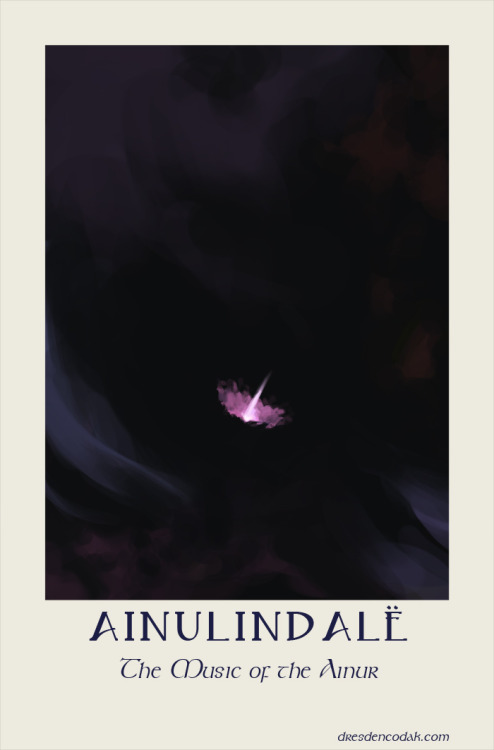
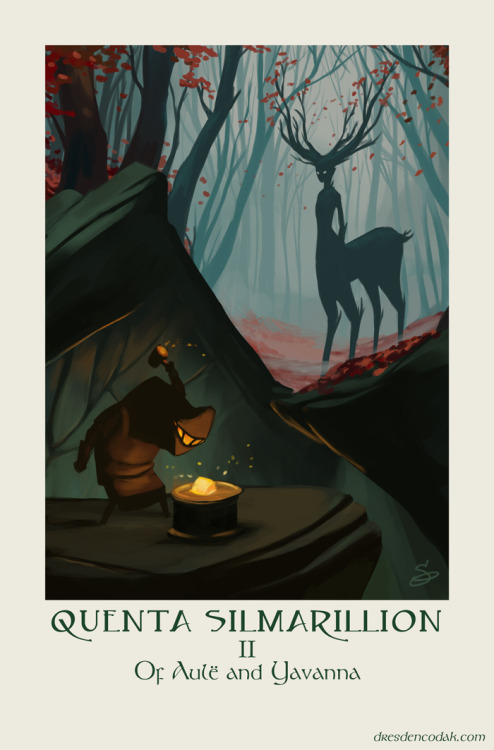
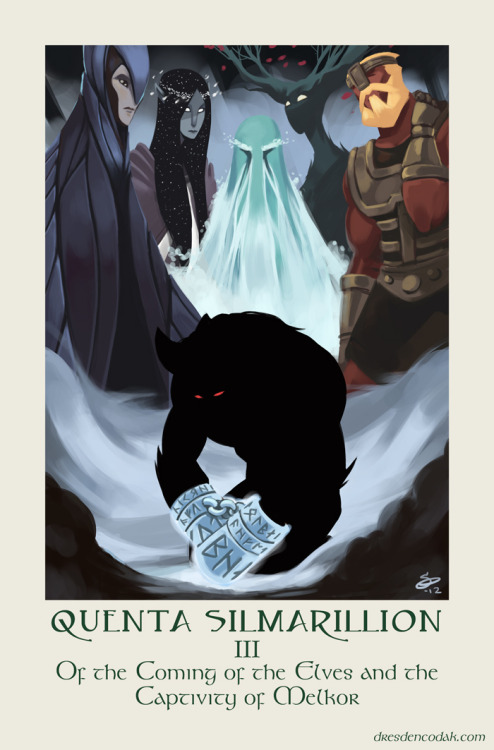
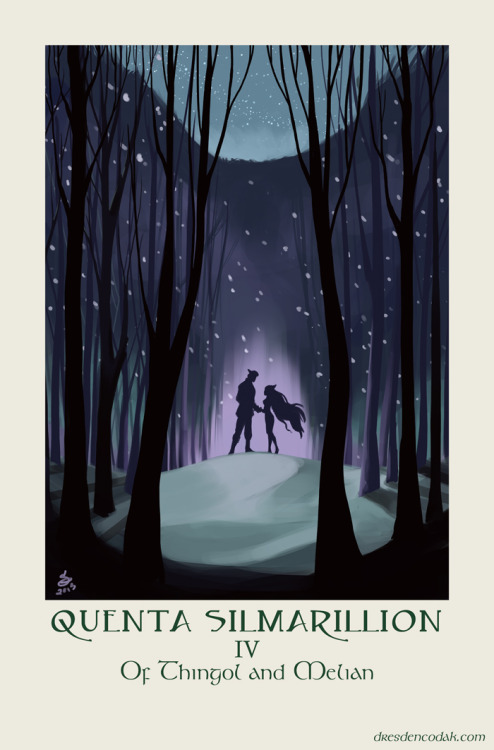
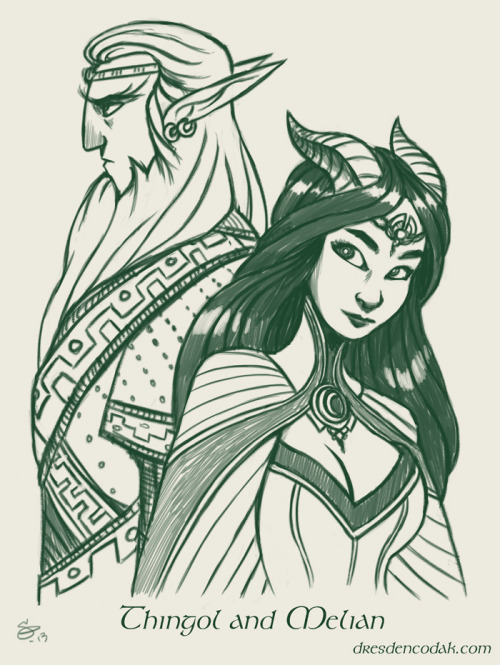
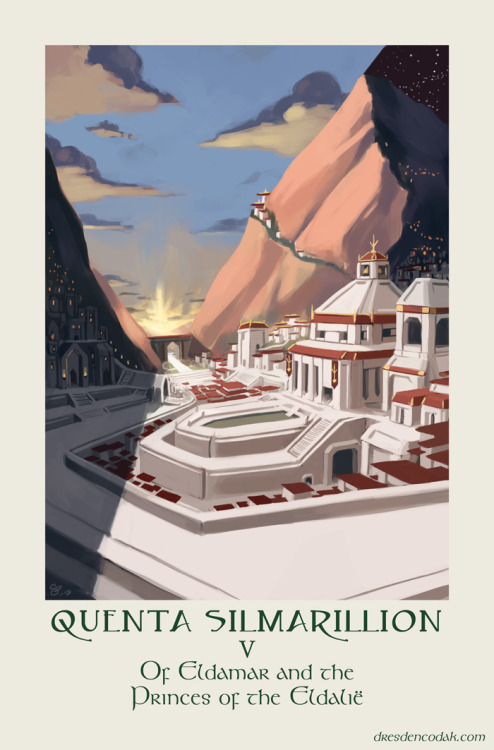
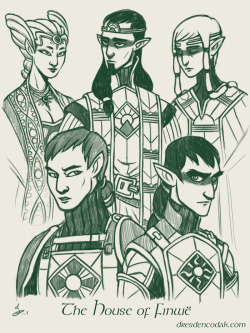
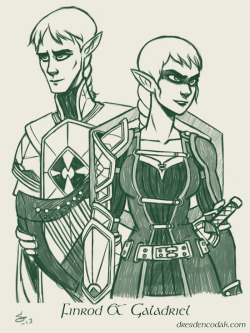
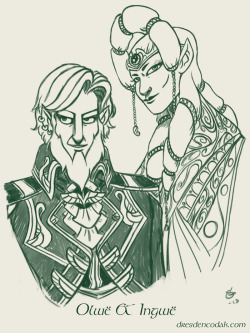
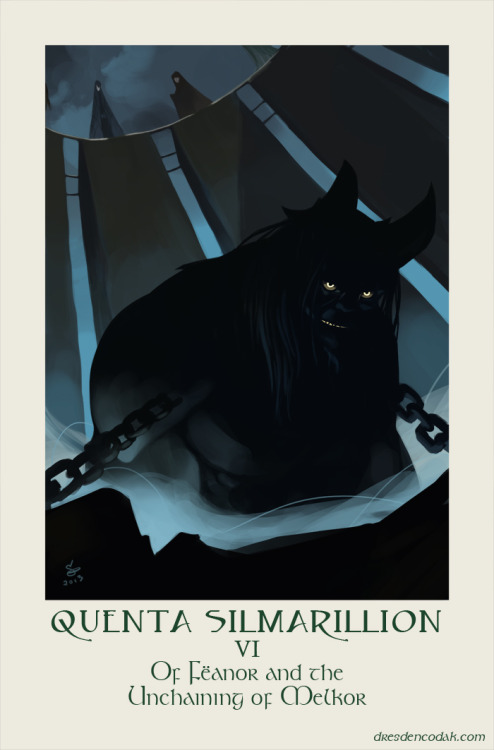
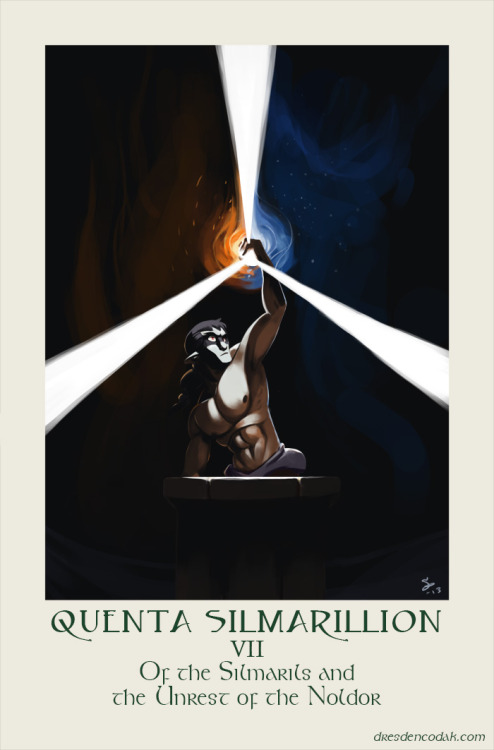
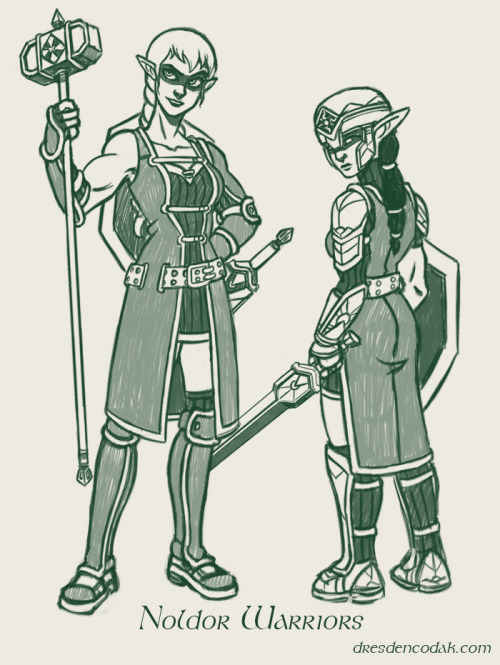
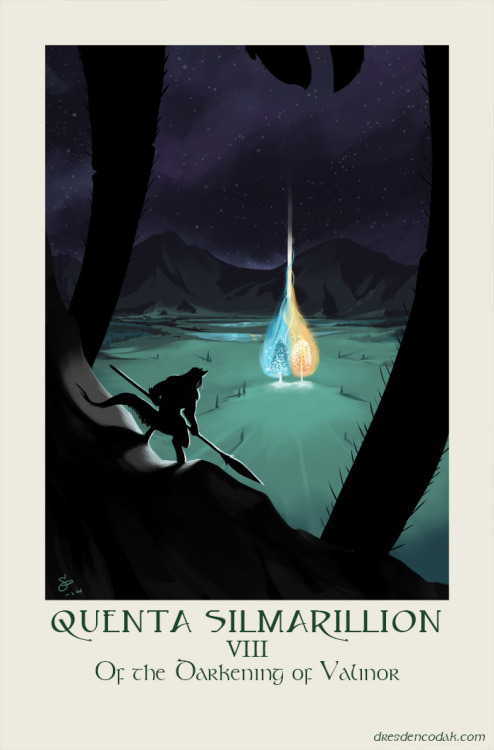
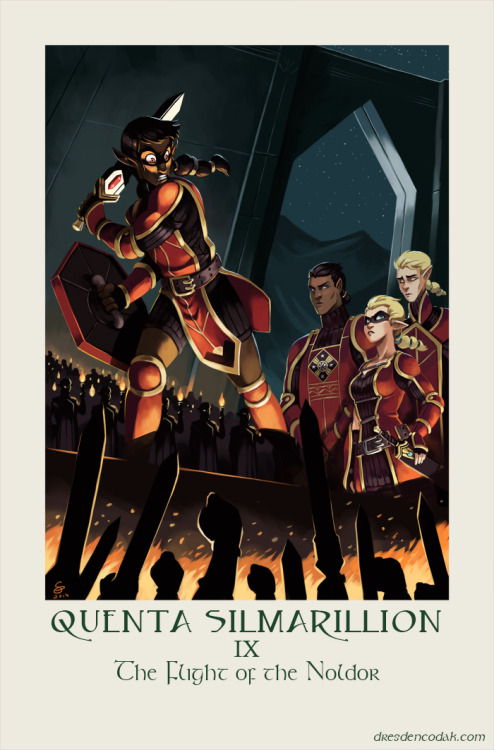
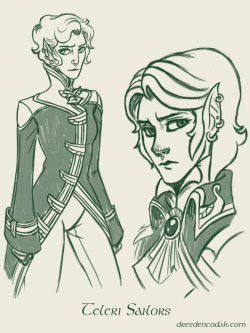
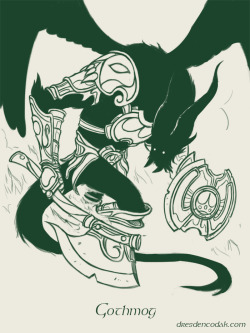
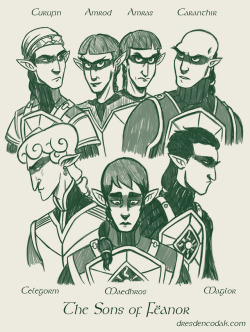
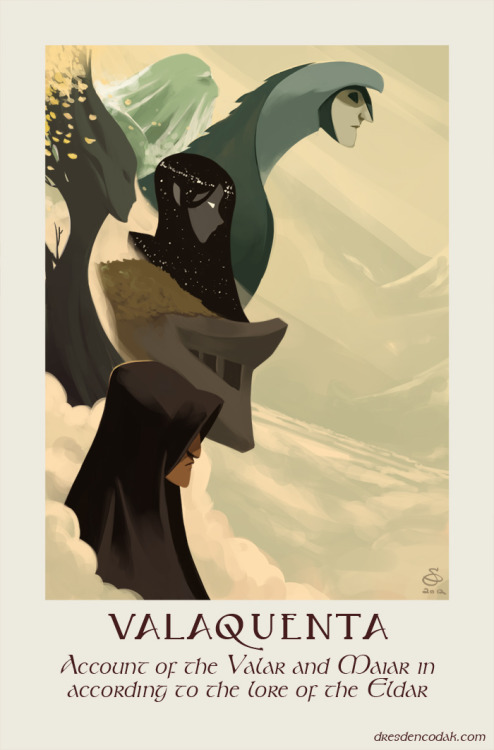
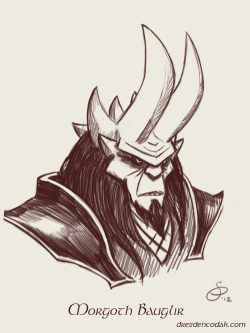
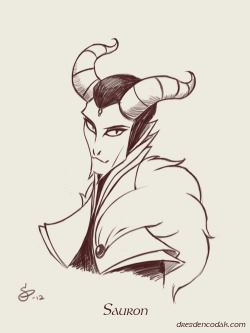
No comments:
Post a Comment